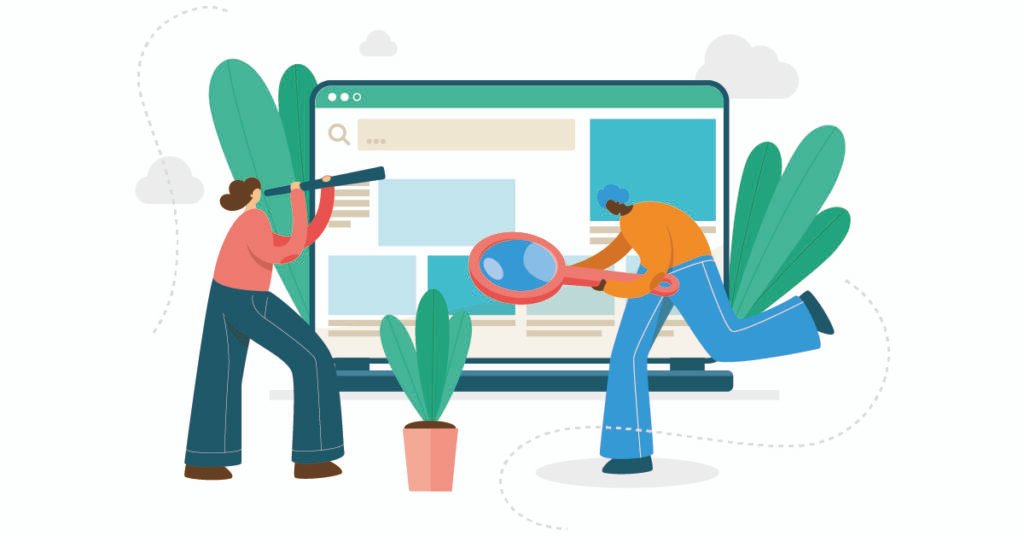Optical character recognition is one of the most useful tools in modern academics. The use of this technology has not only simplified life for universities, colleges, and schools, but has also aided enterprises in a variety of industries.
Imagine how simple it would be to convert your bookshelf into a little USB drive. One of the primary reasons why OCR has become a standard technology in academies and businesses is its ease and space-saving capabilities.
So, how does it work? Furthermore, what are the long-term consequences of storing information on digital devices? Is there more upside than downside? So, let’s dig in and uncover the answers.
What is OCR?
In 1920, Austrian engineer Gustav Tausacheck developed the concept of a character-reading machine. Until that time, many people thought this was a pipe dream with no future ramifications.
By 1929, Gustav had obtained a patent in Germany for his invention, the OCR machine. Initially, it was also known as the reading machine. This concept stemmed from the device’s practicality, as reading is essentially what it does.
However, the use of OCR is far more sophisticated than it appears. Over the years, the gadget has shrunk in size, and OCR pens are now often hooked to PCs. These pens allow you to scan a document and enter it into any digital device.
OCR scans items with optical lenses, such as books, pamphlets, and other text forms. An optical character recognition system converts text from a physical medium to a digital copy with precision.
The optical lenses scan through papers, allowing the user to scan them without physically entering them into a digital device. This is one of the reasons why OCR machines are required at every institution with a high volume of written output.
How Does It Create Documents?
Let’s get to the point: how does it scan through documents? What are the main qualities of an OCR device? Furthermore, how does tangible text get scanned and converted into soft copies or digital documents?
Remember that OCR is not the same as a scanner, which is commonly seen on printers. A scanner scans papers, but an OCR device scans them letter by letter.
A scanner practically takes a photograph of a paper in a suitable setting. The scanner generates this atmosphere by closing the lid on top of the paper and forcing it against the optical scanning lenses.
In comparison, an OCR equipment scans the document independent of the lighting conditions. It does not capture images of the documents; rather, it recognizes each character and writes it into the digital device. Thus, it is known as optical character recognition.
These optical lenses are almost identical to the ones found on the bottom of your mouse or in DVD or CD readers. These optical lenses scan their respective objectives. For example, a mouse’s lens scans the surface to detect your movements.
The optical drive of a DVD or CD reader is used to scan the disk for data burned into it. On the contrary, the lenses in OCR devices search through documents for characters and convert them into words.
Here’s How It Works Within a Document:
- De-Skewing Alignments
If you scan a book using OCR, it must appear in a linear alignment on your selected device. OCR accomplishes this by de-skewing the alignment of a document before converting characters into words. - Zoning Paragraphs
In this phase, OCR recognizes the empty spaces on the page first, therefore your document’s spacing and formation are important factors. This approach allows the device to scan without regard for page numbers, watermarks, or secondary content. - Binarization – Color Grading
If you scan a document, it may appear hazy or deformed. OCR technology avoids this by improving the color grading of your document. This technology enables the optical lens to quickly read through the text, regardless of color or font. - Segmenting the Document
Once the page is ready for word/character scans, the OCR device divides each word into groups, from longest to shortest. It enables the program to progress through the text, identifying each character before combining them into words. - Script Recognition
Script recognition enables OCR to align documents accurately. In addition to scanning characters, OCR’s principal function is to align them properly. If a character includes more than ten words, script recognition enables OCR to place it precisely where it belongs. - Post-processing
This is where OCR adds the finishing touches to the documents, combining words, grouping them together, and so on. While post-processing can be time-consuming, programs like image-to-text appear to make it simple.
Types of OCR
Since Gustav Tausacheck’s time, optical character recognition has advanced to become a cutting-edge technology. The technology has evolved into numerous critical devices, allowing the worldwide population to use it in a variety of ways.
So, how many types of OCR exist? OCR is classified into three types: word scanning, character scanning, and mark recognition. The most recent improvement, as seen on the internet today, reads words and characters virtually.
So, here are the five main forms of OCR available today:
Optical Character Recognition
We’ve already discussed this in depth: OCR, or optical character recognition, scans written text, character by letter, until it produces words, and eventually sentences.
Optical Word Recognition
Optical Word Recognition, or OWR, is the most recent version of OCR, except instead of sifting through characters, it scans words. The technique used in this method is designed to scan words rather than letters, which distinguishes it from OCR.
Optical Mark Recognition
Optical Mark Recognition, or OMR, is the technique of reading marks created by humans on paper. For example, a survey paper will include many ticks and X markings. This technology allows the user to scan thousands of such forms at once.
Intelligent Word Recognition
IWR, or intelligent word recognition, is the most recent version of OCR available in the market today. The image to text converter employ this technique to distinguish digital and handwritten words.
Intelligent Character Recognition
Intelligent character recognition, or ICR, works similarly to IWR in that it detects characters on a digital document. This technique is almost identical to OCR, but it uses the IWR algorithm.
Why Do You Need OCR?
Now that we’ve defined OCR and its different forms, it’s time to consider its consequences. While OCR is important for kids, it also benefits businesses and academies.
So, how does OCR and its numerous variations affect different aspects of life? Let’s dig in.
- Everyone Requires Digital Copies
Emails are the major and professional mode of communication between businesses and academies these days. And few individuals prefer distorted or fuzzy scanned materials. That is where OCR meets the need for digital copies, allowing the user to scan hundreds of documents and convert them to digital copies for the convenience of any business. - Time Is of the Essence
Businesses in today’s environment have little time to deal with scanned papers. Using OCR technology can save firms a significant amount of time. A business must complete tasks swiftly because time is of the essence in the internet world, whereas students seek to accomplish the same. - Suitable for Supply Chain or Logistics
Supply chain and logistics are two industries that are constantly drowning in receipts, ledgers, and other written forms of material. This factor makes record-keeping time-consuming. As a result, adopting an OCR mechanism can assist a firm in replacing these antiquated ways by allowing it to save years of data and information in virtual storage. - Academies and Institutions
Academies and institutes make extensive use of OCR technology. It allows them to keep years and years of records stored with the use of OCR.
Furthermore, students in such institutions benefit from image-to-text converters, which allow them to study hours of material in minutes.
9 Key Benefits of Using OCR
A wide range of industries benefit from using OCR. Throughout its 100-year history, OCR has made life easier for countless individuals all throughout the world.
A tribute to how OCR technology improves over time. So, how does this assist you? Whether you’re a business or a student, here’s what you should anticipate from OCR:
- Cost Efficiency
Writing down books and other company records would cost a lot of money, but employing OCR cuts would cost less than half.
As a result, OCR can considerably benefit a business by allowing it to save money on the expense of storing vital data. - Time Saving
Saving time is the top concern for any business or student today. Writing a 300-word page would take at least 15 minutes. In contrast, taking a picture and using a Jpg to Word converter takes less than a minute. - Unmatched Precision
Scanning a document or any type of paper may distort the wording or obscure crucial information. Using OCR, however, avoids any of this. Not only does it use precise technology, but OCR has always been more accurate over time than scanners. - Increased Productivity
Consider sitting down and penning hundreds of words using physical or scanned copies. Not only will it be tedious, but it will also reduce your productivity. In contrast, OCR overcomes this by employing precise methodologies, allowing you to maximize your productivity. - Data Storage
Many firms struggle with the storage of historical data. Old ledgers, receipts, record books, and other documents can take up a lot of physical space. This is one of the reasons many firms have used OCR, as it allows them to keep critical data in virtual storage. So, if you want to store a large amount of valuable historical data, you’ll require OCR. - Data Analysis
Analyzing data from books can be a stressful affair. Furthermore, it would take days to go through a single document. That’s when OCR comes in and simplifies things once again. Scanning and converting physical data to virtual data using OCR can help you sift through it fast. Helping you examine data without spending time. - Document Index
When you use OCR to produce copies of documents, you can index them according to your preferences. This is likely the most significant advantage of employing OCR. When you thoroughly index data, it makes it easier to look for any relevant information, saving you a lot of time. - Unlocks Endless Possibilities
Consider revising old data from written copies, receipts, or record books. This is precisely the benefit you receive when you use OCR to duplicate your data. It opens up new options and allows you to update existing data and documents. - Convenience of Access
OCR seems like a fantastic technology, so it must be pricey, right? No, it is not. Both businesses and students can utilize OCR for free.
When you add up everything we’ve described so far, OCR offers you a plethora of advantages. However, the cherry on top of everything is the convenience that it provides.
Not only does it open up new possibilities, but it also allows you to preserve important information without having to store physical files, making it one of the most conveniently accessible technologies.
Even after being invented over a century ago, OCR remains a wonderful technology. The ongoing innovation and application of OCR in a variety of industries demonstrates its importance. As a result, using it can also provide you with the benefits listed above.

